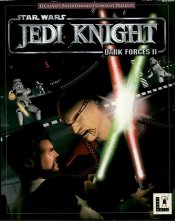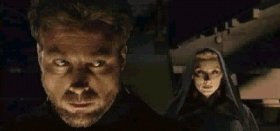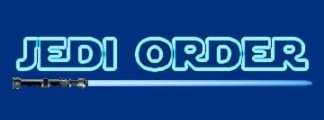About the Jedi Knight: Dark Forces II



Jedi Knight: Dark Forces II cover
The authors of the game have made a great leap since the first part - the platform is Windows, the game uses DirectX and, like many games from LucasArts, it runs briskly even on weaker machines than those considered top at the time of release. From today's perspective, the game's graphics is outdated - eight-bit colors, boxy character models, boxy maps, no amazing visual effects. On the other hand, the Jedi Knight: Dark Forces II is enhanced by the live-action cutscenes. Compared to the first installment, in addition to the first-person view, Jedi Knight also has a third-person view, which is important when fighting with a lightsaber - you have a better overview of the surroundings.
The game benefits from a good story, music, lightsaber usage, and force abilities. However, compared to the huge number of special moves that the new Jedi Academy game inundated us with, the lightsaber only provides two types of slashing - a short slash that can be performed by pressing the primary attack, and then a deadly slash triggered by pressing the secondary attack. Similar to the Jedi Outcast, Kyle doesn't have a lightsaber at the beginning. In terms of Force powers, there is practically everything that can be found in the following works as well. The saber throw and some other abilities are missing, others are extra, but the basic trio of pull/speed/jump is present in the whole series.
The Jedi Knight: Dark Forces II is elevated above the usual 3D action by Star Wars elements. They also include the game's turning point, when Kyle leans towards either the dark or light side of the Force. This decision crystallizes from the beginning of the game. If you kill innocent people while playing, you fall deeper and deeper into the dark side. Another influence on the final decision between dark and light has also the selection of the Force abilities during the game - if mostly good, you have a surer path to the light side. On the contrary, choosing dark forces inclines you to the dark side. The choice of powers is well thought out and also uses secret locations, which finally have some other effect than just a percentage in the statistics of the completed level. The force power upgrade process is based on stars. After some missions, the player gets two stars, and for every map in which the player finds all the secret places, the player gets another one. Up to four stars can be assigned to each ability.


The story features seven dark Jedi, with whom Kyle fights on separate maps, while the last fight with Jerec is pleasantly complicated :-) However, the trickiest map is when Kyle tries to escape from a falling ship. If the player fails to do so within the time limit, which gets shorter and shorter as the difficulty increases, the game is over.
Compared to the Dark Forces, Jedi Knight comes with a multiplayer. In short, I'm just recalling some really great online gaming experiences :-) I'll never forget a map called Battleground Jedi - it was probably the most played saber-only map. Great Free for All, great duels (even without the crutch that JK2 brought us - the keypress challenge).


